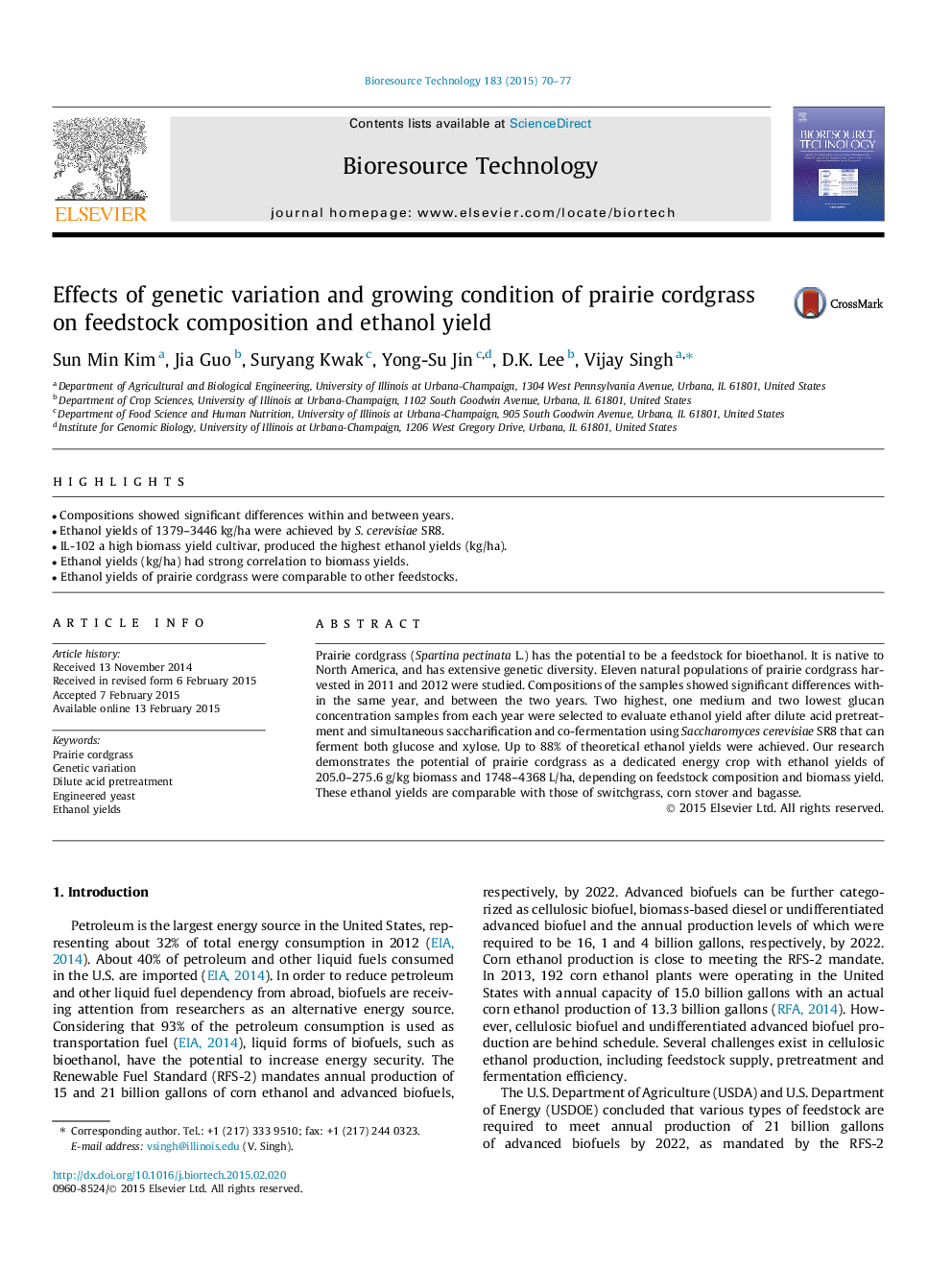| Article ID | Journal | Published Year | Pages | File Type |
|---|---|---|---|---|
| 679874 | Bioresource Technology | 2015 | 8 Pages |
•Compositions showed significant differences within and between years.•Ethanol yields of 1379–3446 kg/ha were achieved by S. cerevisiae SR8.•IL-102 a high biomass yield cultivar, produced the highest ethanol yields (kg/ha).•Ethanol yields (kg/ha) had strong correlation to biomass yields.•Ethanol yields of prairie cordgrass were comparable to other feedstocks.
Prairie cordgrass (Spartina pectinata L.) has the potential to be a feedstock for bioethanol. It is native to North America, and has extensive genetic diversity. Eleven natural populations of prairie cordgrass harvested in 2011 and 2012 were studied. Compositions of the samples showed significant differences within the same year, and between the two years. Two highest, one medium and two lowest glucan concentration samples from each year were selected to evaluate ethanol yield after dilute acid pretreatment and simultaneous saccharification and co-fermentation using Saccharomycescerevisiae SR8 that can ferment both glucose and xylose. Up to 88% of theoretical ethanol yields were achieved. Our research demonstrates the potential of prairie cordgrass as a dedicated energy crop with ethanol yields of 205.0–275.6 g/kg biomass and 1748–4368 L/ha, depending on feedstock composition and biomass yield. These ethanol yields are comparable with those of switchgrass, corn stover and bagasse.
